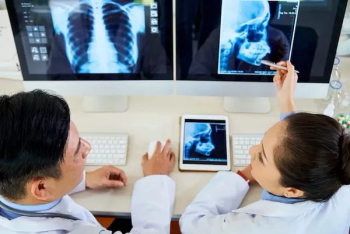
MRI Shows Brain Disruption in Children with PTSD
MRI shows brain changes in children with PTSD.
MRI detects disruptions in the structure of the neural networks among brains of children with post-traumatic stress disorder (PTSD), according to a study published in
Researchers from China and the United Kingdom assessed 47 children (24 with PTSD, 23 who had been exposed to trauma but were not diagnosed with PTSD) who had lived through the 2008 Sichuan earthquake. All the children underwent diffusion tensor imaging (DTI) in order to explore the brain structural connectome.
“Generally speaking, the structural connectome and the functional connectome are based on different types of raw images, which may be used to investigate the brain’s abnormalities through different views,” lead author Qiyong Gong, MD, PhD, of West China Hospital of Sichuan University in Chengdu, China, said in a release.[[{"type":"media","view_mode":"media_crop","fid":"53239","attributes":{"alt":"Qiyong Gong, MD, PhD","class":"media-image media-image-right","id":"media_crop_9812677932266","media_crop_h":"0","media_crop_image_style":"-1","media_crop_instance":"6635","media_crop_rotate":"0","media_crop_scale_h":"0","media_crop_scale_w":"0","media_crop_w":"0","media_crop_x":"0","media_crop_y":"0","style":"height: 202px; width: 170px; border-width: 0px; border-style: solid; margin: 1px; float: right;","title":"Qiyong Gong, MD, PhD","typeof":"foaf:Image"}}]]
The results showed that both groups of children exhibited small-world topology but those with PTSD showed an increase in the characteristic path length and decreases in local efficiency and global efficiency. These children also showed reduced nodal centralities, mainly in the default mode, salience, central executive, and visual regions. The Clinician-Administered PTSD Scale score was negatively correlated with the nodal efficiency of the left superior parietal gyrus.
“In a previous functional and current structural connectome study of the same patient group, we found a shift toward regularization in the brain networks of the PTSD patients relative to controls,” Gong said. “Thus, we speculate that this regularization process may be a general pattern of pediatric PTSD. These abnormalities suggest that PTSD can be better understood by examining the dysfunction of large-scale spatially distributed neural networks.”
Newsletter
Stay at the forefront of radiology with the Diagnostic Imaging newsletter, delivering the latest news, clinical insights, and imaging advancements for today’s radiologists.




